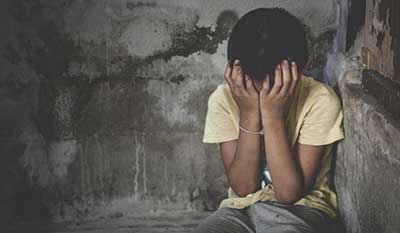GS-2: Welfare Schemes for Vulnerable Sections of the population by the Centre and States and the Performance of these Schemes
Key Phrases: NCPCR, Missing children
Why in news
SC directs states to trace and rehabilitate missing children at earliest
Analysis:
Status of their vulnerability
- Exploited as child labourer - ASER 2017-42% of 14-18 group students are working irrespective of schooling
- Vulnerable to crimes - compared to 2016 crimes against children rose by 28% in 2017 (NCRB)
- During second wave of corona many kids lost both parents and due to social media appeals to house them somewhere risk of illegal trafficking increased - India has over 30 million orphan children
- ICDS 2015-20 million children below age 6 are undernourished
- Danger in home itself-as per NCRB 94% of sexual cases against children were by relatives
- According to NCRB conviction rate in POCSO cases is 30 percent, pendency is 86 %
- End of childhood index-global childhood report by save the children NGO-India ranks 113/176 countries
Recent incidents against children
- Children investigated for sedition case in Karnataka for anti CAA play-mother arrested too - Karnataka state commission for protection of children rights says the action violated rights of children
- Sexual abuse cases in Muzzafarnagar shelter home-many girls have self-inflicted injuries, an indicator of trauma
- In Gujarat teenage girls strip checked in hostel for menstruation-humiliation
- Trump separating children from immigrant parents-mental health
Impact of vulnerability of children in a society
- Continuing persistence of child labour and exploitation poses a threat to national economies and has severe negative short and long-term consequences for children such as denial of education and undermining physical and mental health
- Trafficked children are subjected to prostitution, forced into marriage or illegally adopted; they provide cheap or unpaid labour, are forced to work as house servants or beggars and may be recruited into armed groups.
- Major health and physical risks: They work long hours and are needed to do tasks for which they are physically and mentally unprepared. Working in hazardous situations adversely impacts a child’s physical and mental health and affects intellectual, emotional and psychological development.
- Poverty: Child labour is both a cause and consequence of poverty. Household poverty makes children enter the labour market to earn money thereby missing out on an opportunity to get education, further continuing household poverty across generations in a vicious cycle.
Challenges in tackling child labour and trafficking
- Pandemic is hampering enforcement of anti-child labour laws, with fewer workplace inspections and less vigorous pursuit of human traffickers.
- Incoherency between laws that prescribe a minimum age for employment and those for completion of compulsory school education. It also means that the expansion of quality universal basic education has to extend beyond the fulfilment of statutory provisions.
- Child labour is not uniform. It takes many forms depending upon the type of work that children are made to do, the age and sex of the child and whether they work independently or with families. Due to this complex nature of child labour, there is no one strategy that can be used to eliminate it.
- The absence of national legislation to give effect to global conventions on the employment of children in hazardous industries, as well as on the minimum age of work.
- Lack of effective labour inspections in the informal economy. Around 71% of working children are concentrated in the agriculture sector, with 69% of them undertaking unpaid work in family units.
Efforts taken by government
- Platform for Effective Enforcement For No Child Labour PENCIL - involves state, district, civil society - child tracking system, complaint corner.
- Child labour Act 1986 as amended in 2016 -completely prohibits engagement of children below 14 in all employments.
- National Child Labour Project-Ministry of Labour-suitably rehabilitates children withdrawn from employment-skills them and integrates through vocational training.
- Many civil society organizations such as Bachpan Bachao Andolan founded by Nobel laureate Kailash Satyarthi, Kailash Satyarthi Children’s Foundation, Save the Children, etc. have worked to protect children.
- The Right of Children to Free and Compulsory Education Act, 2009: It mandates free and compulsory education to all children aged 6 to 14 years.
Way ahead
- Role of Panchayat: As nearly 80% of child labour in India emanates from rural areas, the Panchayat can play a dominant role in mitigating child labour.
- Child labour and other forms of exploitation are preventable through integrated approaches that strengthen child protection systems as well as simultaneously addressing poverty and inequity, improve access to and quality of education and mobilize public support.
- Treating Children as Active Stakeholder: Children have the power to play a significant role in preventing and responding to child labour.
- There is an urgent need to revamp educational infrastructure- to ensure access to educational institutions, improvement in quality and relevance of education.
- There is a need to bring uniformity in existing Indian laws dealing with child labour. The laws must expand the definition of a child by prohibiting the employment of and ensuring free and compulsory education (RTE, Act, 2009) for children below 18 years.
Source: Livelaw







